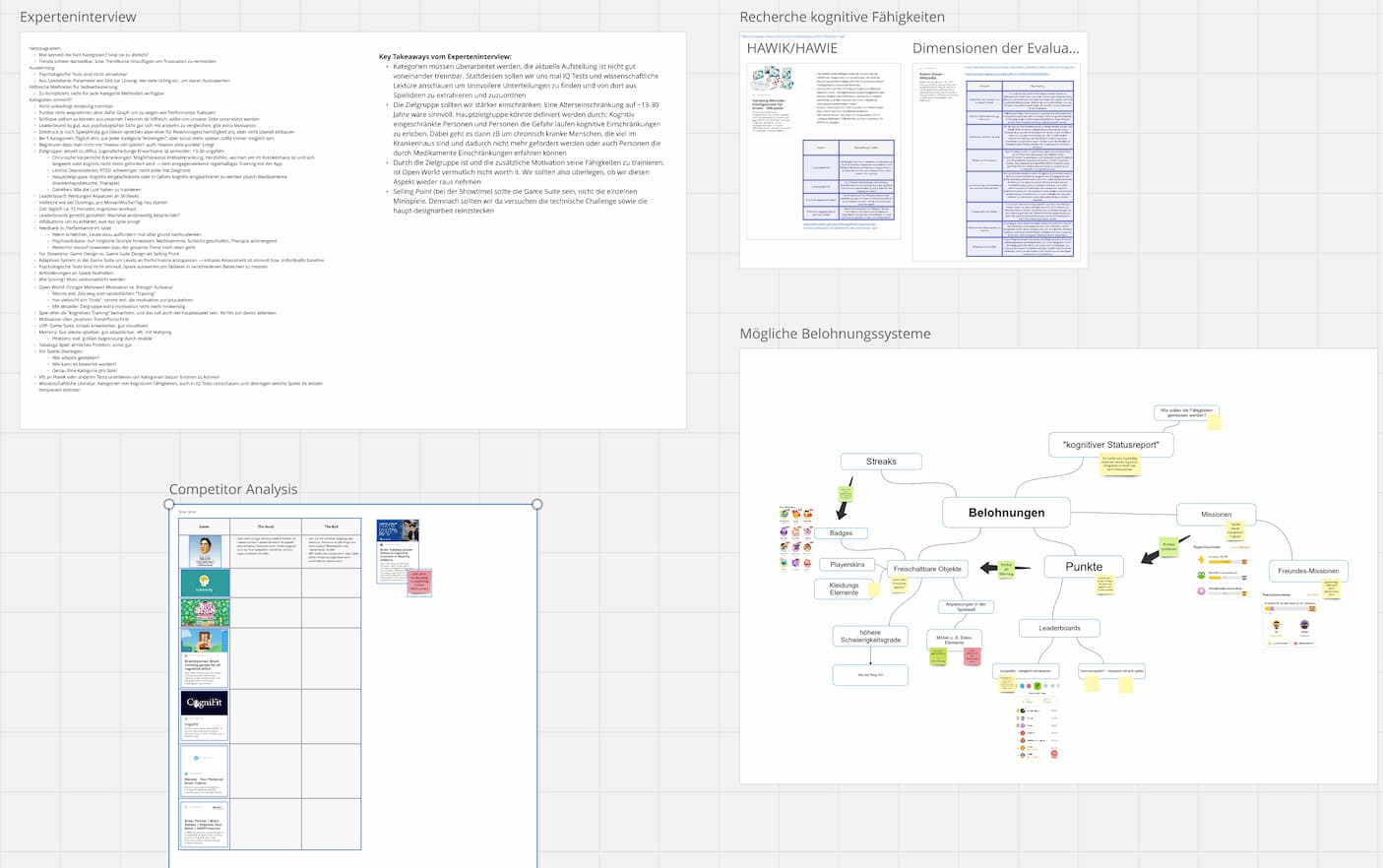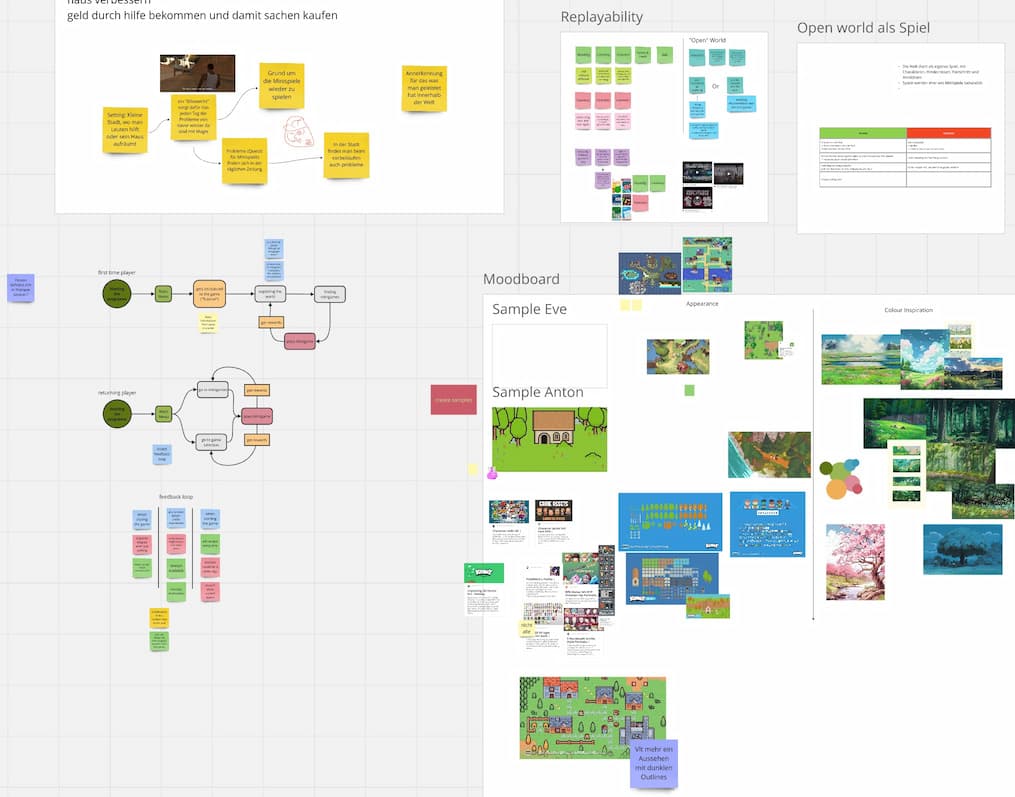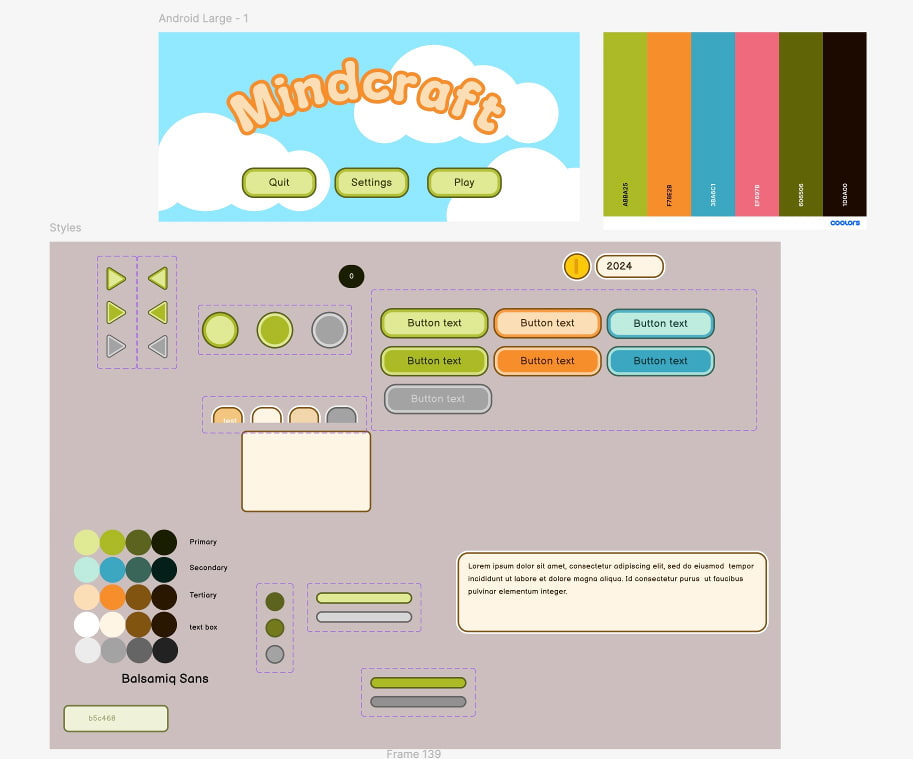Research
As the very first step of our research, we read studies and articles on the topic of cognitive skills and how they can be tested to get an idea of what cognitive skills there are and how they could be measured. We also performed a market analysis to see what existing games with a similar focus are out there and what we could learn from them.
Simultaneously, we already collected ideas for possible minigames we could implement to help enhance specific cognitive skills and researched possibilities to motivate our users to keep training. To collect and review the results of our research in a single space, we gathered our findings in a miro board.
To finalize our research, we conducted an expert interview with a psychologist from Freie Universität Berlin. This way, we could ensure our solution will actually make sense from a psychological perspective. Basing our game suite on actual scientific findings is what differentiates our project from other similar games.

Concept
After we had done all the research and collected all the ideas, we started to work on the concept of our game suite. During this process, we looked at different possibilities on which tech stack we should use and for what platform we should build the project. Considering that the game suite should be available for everyone while making it as easy as possible for patients to get started, we decided on aiming for mobile devices like tablets and smartphones. Due to our previous experience with the engine, we ultimately decided to develop the game with the open-source Godot Engine.
During the concept phase we also picked which minigames we want to implement and started planning the game world and the overall design of the game using a mood board and user stories.
We divided the cognitive skills into five categories (Logical Thinking, Working Memory, Spatial Thinking, Attention and Reaction Speed) and decided that our minimum viable product should include at least one minigame for each category.

Design
While already developing the first minigames and setting up the backend, we started creating the designs. It was important to us that our game suite would be appealing for our target group: Adolescents and young adults between the ages of 13 and 30 who either suffer from chronic physical illnesses and spend a lot of time in hospital, or who are at risk of suffering cognitive impairment.
To achieve this, we decided to go with a clean and simple design that feels warm and welcoming. We also wanted to make sure that the design is colorful and engaging to keep the users motivated to keep training. We also made sure to use a warm and friendly color palette to make the users feel welcome and comfortable.

Implementation
After we had finished the concept and design phase, we started implementing the game suite. To coordinate and keep track of our work, we used the Kanban board we created right at the beginning of the project. This way, everyone could see what the others were working on and what still needed to be done. We also had regular meetings to discuss the progress and to help each other with problems we encountered.